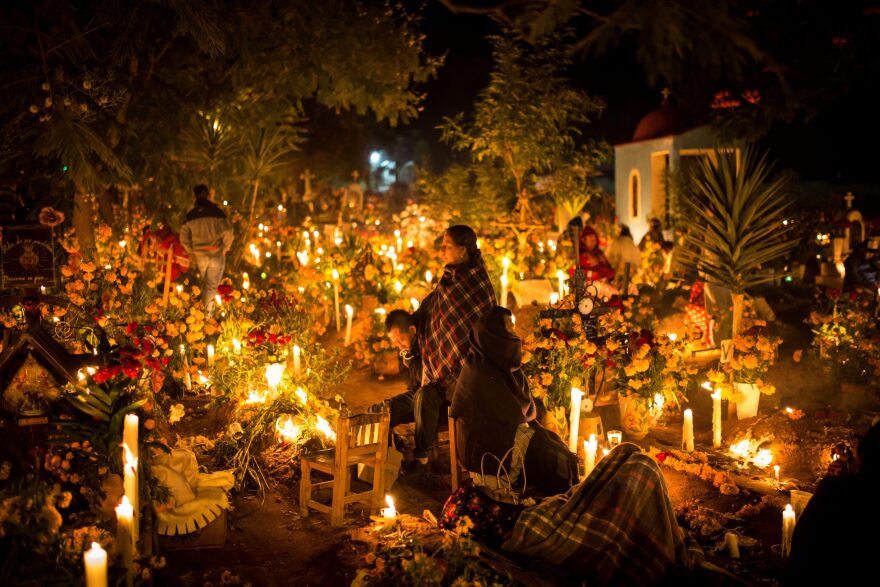A celebration of life and death, the Day of the Dead is a holiday celebrated on the 1st and 2nd of November across Latin America that serves as a time of remembrance and honoring loved ones who have passed away.
From a Mexican cultural point of view, Dr. María Luisa Spicer-Escalante tells us about the origins of the celebration of the Day of the Dead. She said that the tradition started with the Aztecs to thank their gods for their crops. That tradition eventually merged with the Christian solemnity of All Saints' Day.
“The most important celebration is a celebration called "Xocotl Huetzi", which means "the great celebration, the great feast of the gods", and by coincidence, when the Spanish arrive, the celebration of "Xocotl Huetzi" was around the same time as All Saints' Day celebrated by the Spanish. So, in an attempt to win the spirit of the indigenous people, the Spanish tried to put All Saints Day on a par with the Day of the Dead, but they are two celebrations that have completely different origins. So, it is a pure coincidence that it is celebrated on the same day,” said Spicer-Escalante.
The Day of the Dead is celebrated differently depending on the region of Mexico and other Latin American countries. Dr. Celina Wille, who grew up in northern Mexico, said it is a tradition to go to the cemetery to remember one’s loved ones, clean their graves, and put fresh flowers.
“Right there on the outskirts of the cemeteries you can see people selling flowers, food, even mariachi or regional music groups have gone, at least in the north, where, if families feel the desire to bring music to their dead, they hire them to sing perhaps the favorite song of a loved one who has already died. I usually travel to Guatemala, they don't exactly call it Day of the Dead, but they do have other celebrations, some specific dishes like “fiambre”, which are somewhat related. In other words, these customs have spread and changed over time and are manifested in different ways," said Spicer-Escalante.
Professor Spicer-Escalante and Professor Wille started an offering at the Nora Eccles Harrison Museum of Art located on the USU campus. This offering includes food decorations made of ceramic, plants, bread of the dead, flowers, candles, and papier-mâché bread.
“We have a Catrina, those who are Mexicans surely know what La Catrina is: she is this very bourgeois character of a woman who looks like she has a lot of jewels, she is dressed super cute, but the idea is that the social class does not matter, it does not matter our education, no matter our age, we are all going to die. So, from the Mexican positivism of the 19th century, this character of La Catrina was born. So, we have a replica of the Catrina from Michoacán, which is a beautiful handicraft, I hope you see it, I hope you have the opportunity to visit it, and we have also included some photographs to remember the dead, you will see all the photographs we have there, and we will have many activities for children," said Spicer-Escalante.
The Day of the Dead is a two-day celebration. November 1st celebrates all the angels, and everyone who died as children or born dead. November 2nd celebrates all the dead.
On November 2 at 1:30 p.m., at the Nora Eccles Harrison Museum of Art, Dr. Spicer-Escalante and Dr. Wille will give a presentation about this holiday, which will include activities and a tase of the Day of the Dead's traditional cuisine.



